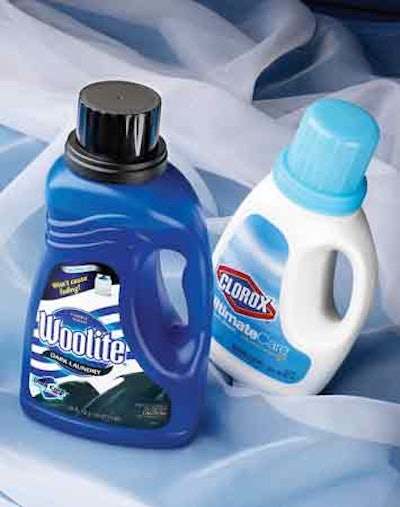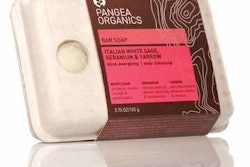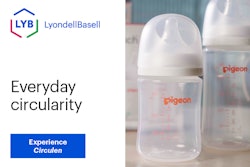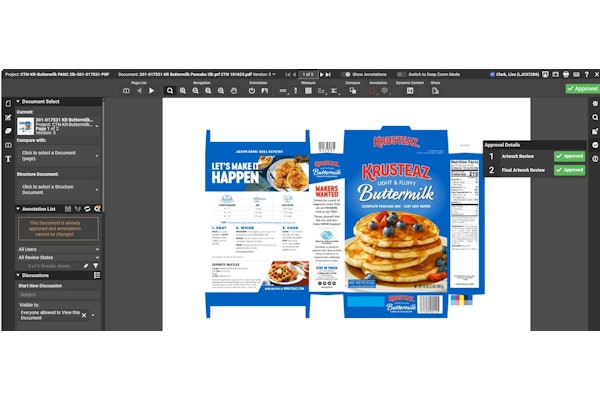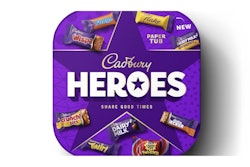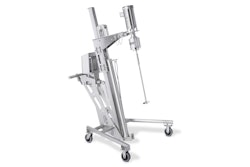Few would argue that package design innovation plays a crucial role in helping today's packaged goods companies prosper in the years to come. But what really is this thing we call innovation, how is it nourished, and how can it be successfully woven into a company's approach to package design? To learn the answers to these and other innovation-related questions, PW brought them to the attention of three thought leaders in the packaging design arena: Elizabeth Head-Fischer, packaging design manager at Texas Instruments; Michael Livolsi, package design consultant formerly with Unilever; and Arno Melchior, global packaging director at Reckitt Benckiser.
PW: How would you define innovation?
Livolsi: It has to be defined in terms of brand plus package. In other words, it must take into account the complete 360-degree branding graphics as well as the structure of the container. Paying attention to category cues is important, too. You know how each product category—whether it's food, personal care, pharmaceutical—has certain guidelines, certain expectations on how consumers shop and what they expect? These category cues must be held onto if innovation is properly executed. But innovation should also forge ahead of category cues if it's going to give the consumer something exciting, some new news.
Melchior: I would define innovation as the thing without which we lose market share. Because if your competition moves ahead and you're still in an outdated-looking package, you'll definitely be left behind.
PW: What internal challenges do you face in conceiving a really innovative package and getting it to market?
Melchior: Getting a fix on the financials is always challenging. Even if your product or package innovation is totally new, there are still products in the marketplace you can compare against. Once you establish that comparable products already in the marketplace cost $2.99, you can't very well price yours at $5.99, regardless of how innovative its packaging is.
Head-Fischer: Innovation, of course, requires coming up with something new. So naturally your innovation team begins thinking outside the box. They begin looking at novel substrates, for example. The internal challenge you then face revolves around keeping team members from each going off in wildly different directions. Take, for example, the designers on the team. They might be proposing something really radical where even the package's footprint might be very different from what's been used in the past. But a team member whose responsibilities lie more in the manufacturing and operations areas will be thinking along far more practical lines. Someone else, maybe in purchasing, may focus more on the cost of the packaging innovation your team is aiming at, or he may ask how much energy is consumed to make it. Roping these and other views together while still staying true to the spirit of innovation is like herding cats.
Livolsi: Packaging has to breathe. It can't be too crowded with communication. So marketers and designers who are on the innovation team have to agree together that they will honor the negative space on a package just as much as the positive space that carries brand, color, shape, copy, and package architecture.
Another internal challenge is one where a brand manager is so intent on projecting their brand they become a little too protective about design elements or images that project that brand's heritage. They may require some persuading from others on the innovation team that in some cases a brand needs to evolve from where it is in '06 to where it needs to be in '09. There can be a certain conservativeness within the corporation that has to be dealt with, so that's another one of those internal challenges you mentioned.
PW: Mike, can you elaborate on what you mean by letting a package breathe?
Livolsi: I mean, number one, that the design must be clean. Type styles, for example, should be from the same family. Too many packages I see today confuse type styles whose personalities really contradict each other, or they conflict with the personality of the product or brand.
PW: Is it necessary to have on the innovation team a director, a leader, a champion? And should this person come from any one discipline in particular?
Head-Fischer: I think an innovation leader is important, yes. Without one person really spearheading the effort internally, it can spin off in too many competing directions. Even if that one person doesn't have all of the insights, it's still important to have a captain.
Melchior: Without a leader, the project goes unsupervised. For most of our innovation projects, the leader is from global marketing.
Livolsi: I think the innovation leader can be from any number of disciplines. It doesn't much matter if it's a design manager or a packaging engineer, as long as they want to take a lead role, have a strong and informed point of view, and have a deep understanding of and passion for product and brand development and branding.
PW: What do key players in the package development and branding process need to do to get that all-important buy-in from senior management in order to push forward some of these innovative packaging concepts that too often make it to the drawing board but don't quite make it into production?
Livolsi: A key thing is getting key customers, the Wal-Marts or Targets or Walgreens, involved at an early stage and getting them involved in the thinking behind the package development and branding strategy. When these key people at the customer level are committed to a proposition, even if it's still in its development stage, a real comfort level can begin to develop internally.
Also important is keeping all the disciplines that are part of the innovation team involved and engaged. Whether it's package design, packaging engineering, R&D, the creative side of the house—keep them all involved in the evolution of the strategy and where it's going. That's how everyone can learn from each other in a developing manner, as opposed to having things done in silos where first the structure is determined and locked in by those in the engineering silo, then we go to graphics, and so on. You lose synergies when that happens.
Melchior: You need to show by means of consumer research that this is a winning idea. Focus groups can help a lot here.
Head-Fischer: Effective use of focus groups can help gain support from management. If an innovation strategy makes sense to focus group participants, if they get it, the buy-in from management becomes considerably easier. It can't be just innovating for innovation's sake. You have to prove your ground.
PW: Liz, does senior management give your industrial design group of managers and so forth a lot of leeway in the trial-and-error phase of package development? Or do they expect you to be pretty close to on target from the start?
Head-Fischer: We're given enough leeway. We're not expected to be right on target from the get-go. But you have to have sound logic behind the moves you're proposing. And you have to be able to demonstrate that you're guided by sound testing procedures, not only with focus groups but against ISTA guidelines and all the subsequent testing procedures and metrics that carry a package through.
PW: Can you name a recently introduced package that you classify as an innovation success?
Livolsi: I think Unilever's Axe line of men's care products was quite successful in connecting with the target audience: young males. Their expectations for a product that really delivers an experience are met by a design that is striking, yet the package is user friendly while managing to showcase both product and package. Clorox is another good example. As I said earlier, one key to successful innovation in package design is that ability to hold onto category cues yet still push ahead of those cues to create some new news. I think Clorox has done this quite effectively with Ultimate Care Premium Bleach, a new line extension. The package almost has a Woolite-like quality to it in the way it conveys notes of gentleness. As we know, the umbrella personality for the Clorox brand is very strong. It takes out stains consistently. But with this line extension they hold onto the credibility of Clorox yet bring to the package qualities that are gentle. The package suggests clothes will be cleaned in a gentle way.
Melchior: The most innovative package we've come up with in the last two years is the dual-chamber bottle used for both Spray 'n Wash laundry cleaner and Resolve carpet cleanser. This bottle not only has two chambers, it also has a very complicated dispensing head that mixes the two liquids. As soon as you combine the two liquids, they start to fizz and go to work on stains. The dispensing head we came up with includes five injection-molded plastic parts. It was a complicated development involving 10 injection molds, three or four blow molds, and several million dollars in filling lines, both in Europe and the U.S. The two products launched in January 2005.
PW: Where do you see package structures trending in the next few years?
Head-Fischer: I've been to some really great conferences lately that make me believe we'll see great strides on the environmental footprint of packaging. Alternatives to PVC is just one example. New technologies seem to be emerging faster and faster now. I also see a lot of people trying to think of how a package might not necessarily have to go directly to the waste stream. People are asking if there's a way a package might be reused somehow by the consumer, maybe as a lunchbox or a waste basket, just about any subsequent re-use in the household other than an immediate trip to the Dumpster. Compostable materials like PLA is another area where I think we'll see progress. Such materials are not entirely where they need to be just yet, but look at the strides they've made so far.
Melchior: I see lightweighting being looked at more carefully than ever. That may involve design work that makes a rigid package lighter, or it may be taking a close look at a flexible package in place of rigid. It isn't just the Wal-Mart sustainable package initiative that will drive this, either. It's also a response to ever increasing petrol prices. I also see continued expansion into bio-based materials, though some work will need to be done in educating consumers about what to do with them. How do you tell consumers that one yogurt container belongs in the compost stream and one belongs in the recycle stream?
